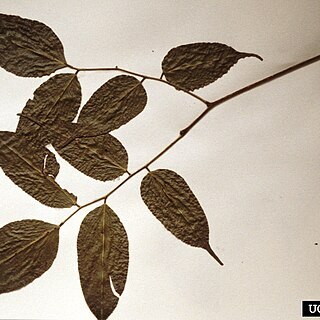Pod shortly stipitate, flat, tapering at the base, asymmetric, the lower margin evenly curved but the upper ± sinuous, ± concave towards the base and convex in upper half, glabrous or glabrescent, shortly beaked, dehiscing into thin but stiffly woody twisted valves, 1–4-seeded.
Leaves usually imparipinnate, the leaflets ± leathery, entire, nearly always alternate (1-foliolate in one West African species); stipels present or absent; pulvinus present; buds well developed, flattened, oval or round with broad scales.
Seeds black or dark brown, ellipsoid; hilum short, near one end of seed, surrounded by a short white cupular rim aril which is produced on one side into a curved strap-shaped process clasping the funicle.
Corolla white or speckled and streaked with pink or purple, glabrous or with few hairs; standard without folds or processes, with short distinct claw; wings and keel petals with well marked auricles.
Flowers usually fragrant, in axillary or terminal racemes or terminal panicles, the pedicels inserted singly; bracts and bracteoles deciduous.
Upper stamen almost free, curving away from the sheath at the base and apex but sometimes lightly adhering in the middle; anthers uniform.
Ovary glabrous or pubescent, shortly stipitate, 2–6-ovuled; style cylindrical; stigma small, terminal, punctate or capitate.
Calyx with broad lobes much shorter than the tube, the upper pair united for at least half their length.
Evergreen trees or shrubs.
Disk absent.
